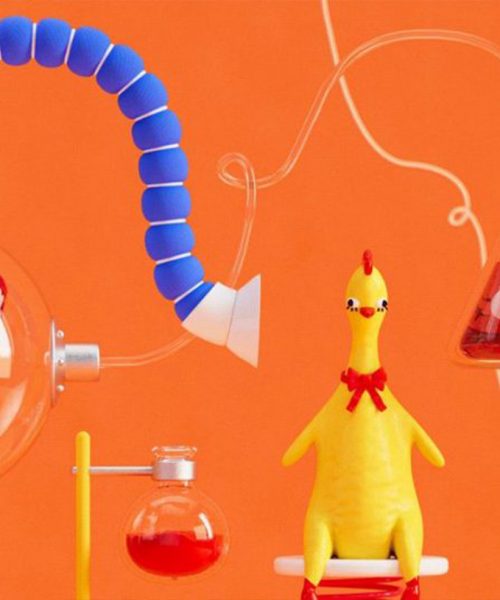- Đối với sản phẩm có giá: Sau khi chúng tôi ghi nhận thông tin đã thanh toán sản phẩm của bạn, sản phẩm sẽ được mở khóa và bạn có thể xem trực tiếp và tải tài liệu sản phẩm.
- Đối với thành viên trả phí: Bạn có thể mua và thanh toán sản phẩm với giá 0đ để tải tài liệu sản phẩm.
- Bạn có thể liên hệ với chúng tôi để được hỗ trợ mở khóa sản phẩm sớm nhất.
ROBOTS
- Chúng tôi chấp nhận các phương thức thanh toán sau đây: Thẻ tín dụng, thẻ ghi nợ, PayPal, chuyển khoản ngân hàng và tiền mặt.
Chúng tôi sẽ không thu thêm phí cho bất kỳ hình thức thanh toán nào.
- Nếu bạn gặp vấn đề về sản phẩm của chúng tôi trong thời gian sử dụng, vui lòng liên hệ với chúng tôi để được hỗ trợ xử lý sớm nhất nhé.
Xem trước mẫu
ROBOTS
Since the dawn of human ingenuity, people have devised ever more cunning tools to cope with work that is dangerous, boring, onerous, or just plain nasty. That compulsion has culminated in robotics – the science of conferring various human capabilities on machines.
A –The modern world is increasingly populated by quasi-intelligent gizmos whose presence we barely notice but whose creeping ubiquity has removed much human drudgery. Our factories hum to the rhythm of robot assembly arms. Our banking is done at automated teller terminals that thank us with rote politeness for the transaction. Our subway trains are controlled by tireless robo- drivers. Our mine shafts are dug by automated moles, and our nuclear accidents – such as those at Three Mile Island and Chernobyl – are cleaned up by robotic muckers fit to withstand radiation.
Such is the scope of uses envisioned by Karel Capek, the Czech playwright who coined the term ‘robot’ in 1920 (the word ‘robota’ means ‘forced labor’ in Czech). As progress accelerates, the experimental becomes the exploitable at record pace.
B –Other innovations promise to extend the abilities of human operators. Thanks to the incessant miniaturisation of electronics and micromechanics, there are already robot systems that can perform some kinds of brain and bone surgery with submillimeter accuracy – far greater precision than highly skilled physicians can achieve with their hands alone. At the same time, techniques of long-distance control will keep people even farther from hazard. In 1994 a ten- foot-tall NASA robotic explorer called Dante, with video-camera eyes and with spiderlike legs, scrambled over the menacing rim of an Alaskan volcano while technicians 2,000 miles away in California watched the scene by satellite and controlled Dante’s descent.
C –But if robots are to reach the next stage of labour-saving utility, they will have to operate with less human supervision and be able to make at least a few decisions for themselves – goals that pose a formidable challenge. ‘While we know how to tell a robot to handle a specific error,’ says one expert, ‘we can’t yet give a robot enough common sense to reliably interact with a dynamic world.’ Indeed the quest for true artificial intelligence (Al) has produced very mixed results. Despite a spasm of initial optimism in the 1960s and 1970s, when it appeared that transistor circuits and microprocessors might be able to perform in the same way as the human brain by the 21st century, researchers lately have extended their forecasts by decades if not centuries.
D –What they found, in attempting to model thought, is that the human brain’s roughly one hundred billion neurons are much more talented – and human perception far more complicated – than previously imagined. They have built robots that can recognise the misalignment of a machine panel by a fraction of a millimeter in a controlled factory environment. But the human mind can glimpse a rapidly changing scene and immediately disregard the 98 per cent that is irrelevant, instantaneously focusing on the woodchuck at the side of a winding forest road or the single suspicious face in a tumultuous crowd. The most advanced computer systems on Earth can’t approach that kind of ability, and neuroscientists still don’t know quite how we do it.
E –Nonetheless, as information theorists, neuroscientists, and computer experts pool their talents, they are finding ways to get some lifelike intelligence from robots. One method renounces the linear, logical structure of conventional electronic circuits in favour of the messy, ad hoc arrangement of a real brain’s neurons. These ‘neural networks’ do not have to be programmed. They can ‘teach’ themselves by a system of feedback signals that reinforce electrical pathways that produced correct responses and, conversely, wipe out connections that produced errors. Eventually the net wires itself into a system that can pronounce certain words or distinguish
...ROBOT
Khi khả năng sáng tạo của con người còn ở thuở sơ khai, thì họ đã phát minh ra những công cụ tinh xảo hơn để giải quyết các công việc nguy hiểm, nhàm chán, nặng nề, hoặc đơn giản là dơ bẩn. Sự thôi thúc đó đã lên đến đỉnh điểm trong ngành chế tạo người máy – đó là ngành khoa học tạo ra các khả năng khác nhau của con người trên máy móc.
A –Thế giới hiện đại thì ngày càng đông đúc bởi những thiết bị thông minh mà chúng ta hầu như không nhận thấy sự hiện diện của chúng nhưng sự xuất hiện tràn lan của chúng đã loại bỏ nhiều nỗi vất vả của con người. Các nhà máy của chúng tôi hoạt động dựa trên sự kết hợp nhịp nhàng của các cánh tay robot lắp ráp. Ngân hàng của chúng tôi được thực hiện tại các trạm rút tiền tự động để ghi nhận hành vi thủ tục cho các giao dịch của chúng tôi. Các chuyến tàu điện ngầm của chúng tôi được điều khiển bởi những robot người lái có thể vận hành liên tục. Các giếng mỏ của chúng tôi được đào bằng các mũi khoan tự động, và các vụ tai nạn hạt nhân – chẳng hạn như các vụ tai nạn ở Three Mile Island và Chernobyl – được dọn dẹp bằng các rô bốt máy ủi để chống lại bức xạ.
Đó là phạm vi sử dụng được hình dung bởi Karel Capek, nhà viết kịch người Séc, người đã đặt ra thuật ngữ ‘robot’ vào năm 1920 (từ ‘robota’ có nghĩa là ‘lao động cưỡng bức’ trong tiếng Séc). Khi đẩy nhanh tiến độ, thử nghiệm trở nên có thể được khai thác với tốc độ kỷ lục.
B –Những cải tiến khác hứa hẹn sẽ mở rộng khả năng của người điều khiển. Nhờ sự thu nhỏ không ngừng của điện tử và vi cơ, đã có những hệ thống robot có thể thực hiện một số loại phẫu thuật não và xương với độ chính xác nhỏ hơn một milimet – độ chính xác cao hơn nhiều so với những gì mà các bác sĩ có tay nghề cao có thể đạt được chỉ bằng tay của họ. Đồng thời, kỹ thuật kiểm soát vận hành đường dài sẽ giúp mọi người tránh xa nguy hiểm hơn. Năm 1994, một robot thám hiểm của NASA cao 3.05 mét tên là Dante, với đôi mắt máy quay ghi hình và đôi chân giống như nhện, đã di chuyển trên vành đai đầy nguy hiểm của một ngọn núi lửa ở Alaska trong khi các kỹ thuật viên ở cách đó 2.000 dặm ở California theo dõi cảnh tượng bằng vệ tinh và điều khiển quá trình đi xuống của Dante.
C –Nhưng nếu robot đạt đến giai đoạn kế tiếp về khả năng tiết kiệm sức lao động, chúng sẽ hoạt động với ít sự giám sát hơn của con người và có thể đưa ra ít nhất một vài quyết định cho chính mình – những mục tiêu đặt ra là một thách thức đầy khó khăn. Một chuyên gia cho biết: “Mặc dù chúng tôi biết cách ra lệnh cho robot để xử lý một lỗi cụ thể, nhưng chúng tôi vẫn chưa thể đưa ra một robot có đủ nhận thức để tương tác với thế giới năng động một cách phù hợp. Thật vậy, cuộc hành trình tìm kiếm trí tuệ nhân tạo (AI) thực sự đã đưa ra những kết quả rất khác nhau. Mặc dù với sự bùng nổ của các kết quả lạc quan đầu tiên trong những năm 1960 và 1970, khi xuất hiện các mạch bán dẫn và bộ vi xử lý có thể hoạt động theo cách tương tự như não người vào thế kỷ 21, các nhà nghiên cứu gần đây đã mở rộng các dự đoán của họ thêm hàng thập kỷ thâm chí là hàng thế kỷ.
D –Những gì họ phát hiện ra, khi nỗ lực mô phỏng tư duy, rằng bộ não của con người có khoảng một trăm tỷ tế bào thần kinh vượt trội hơn – và nhận thức của con người ngày càng phức tạp hơn – so với tưởng tượng trước đây. Họ đã chế tạo ra những robot có thể nhận ra độ sai lệch trong bảng mạch điều khiển máy móc với sai số một phần milimet trong môi trường nhà máy được kiểm soát. Nhưng trí não con người có thể thoáng nhìn thấy những khoảnh khắc đang thay đổi nhanh chóng và ngay lập tức bỏ qua 98% không liên quan, nhanh chóng tập trung vào con chuột chũi ở bên đường rừng quanh co hoặc một vẻ mặt nghi ngờ trong một đám hỗn loạn. Các hệ thống máy tính tiên tiến nhất trên Trái đất thì không thể đạt được khả năng đó, và các nhà khoa học thần kinh vẫn chưa biết chúng ta làm như thế nào.
E –Tuy nhiên, khi các nhà lý thuyết thông tin, nhà khoa học thần kinh và chuyên gia máy tính kết hợp tài năng của họ với nhau, họ đang tìm cách để tạo ra được một số trí thông
...Để xem được đầy đủ nội dung và tải dữ liệu, bạn phải trở thành thành viên của chúng tôi và trả phí cho tài liệu (nếu có)












